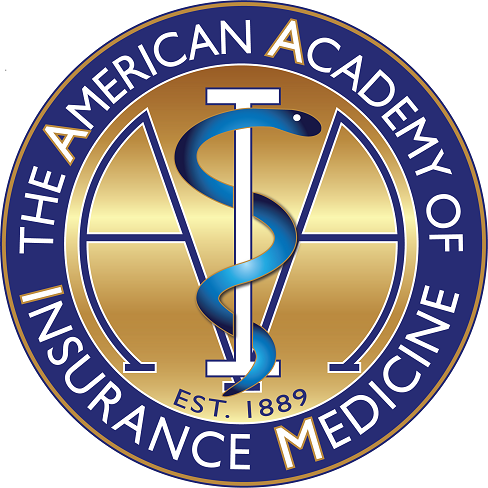Hydatid Cysts of the Lung and Liver
Echinococcosis, also known as hydatid disease, is a worldwide parasitic infection having variable presentations and outcomes.
The following 4 images relate to a 28-year-old Afghan soldier, who presented to a combat support hospital in Khowst, Afghanistan, with minor injuries following a bomb blast. As part of his trauma evaluation, multiple plain X-rays and CT images were obtained. Posterior-anterior and lateral chest X-rays seen in Figures 1 and 2 revealed a large, thin-walled cavitary lesion in the right mid-lung. This finding was better delineated on CT scanning of the lung shown in Figure 3. Additional CT scanning, shown in Figure 4, demonstrated a 3 cm solitary cyst in the right hepatic lobe. Routine lab studies were non-remarkable, but serologic studies (indirect hemagglutination test and enzyme-linked immunosorbent assay) were subsequently positive for echinoccoccus infection, consistent with the radiologic findings.



Citation: Journal of Insurance Medicine 45, 1; 10.17849/0743-6661-45.1.58



Citation: Journal of Insurance Medicine 45, 1; 10.17849/0743-6661-45.1.58



Citation: Journal of Insurance Medicine 45, 1; 10.17849/0743-6661-45.1.58



Citation: Journal of Insurance Medicine 45, 1; 10.17849/0743-6661-45.1.58
Echinococcosis, also known as hydatid disease, is an infection caused most commonly by the echinococcus granulosus tapeworm. It occurs primarily in sheep-grazing areas of the world, but can be found worldwide since the dog is the definitive host. It is common in Africa, Central Asia, Southern South America, the Mediterranean and the Middle East. Although rare in the United States, it has been reported in western states, including California, Arizona, New Mexico and Utah.
Groups at greatest risk for echinococcosis are most often underserved by medical providers, so prevalence is difficult to estimate. Humans and sheep are the intermediate hosts for this parasite, and become infected when they swallow eggs in contaminated food. The parasites enter the bloodstream through the duodenal mucosa and travel to the major filtering organs, primarily the liver and/or lungs. After the developing embryos localize in a specific organ or site, they transform into a larval echinococcal fluid-filled cyst having many small immature tapeworm forms produced by asexual reproduction. In the definitive host, the dog, the embryonic parasites develop into adult tapeworms (3-6 mm long), but in the intermediate host differentiation is limited to a spherical hydatid cyst. These cysts increase in diameter an average of 1 cm per year, but growth is highly variable, and they may produce no symptoms for 10-20 years until large enough to be appreciated on physical examination. Most often, echinococcosis is an incidental finding, as in the case presented.
Most patients have single organ involvement having a solitary cyst. About two-thirds of patients have liver involvement, with the lung being the second most common organ affected. Other potential sites of cyst development include the brain, kidneys, bones, muscles and spleen. The clinical features are highly variable and depend on the site and size of the cyst, as well as possible complications caused by rupture, bacterial superinfection, and/or immunologic reactions. Cystic echinococcosis is rarely fatal, and prognosis is generally good. Death may sometimes result from anaphylactic shock when a cyst full of highly antigenic material ruptures, or following cardiac tamponade when there is heart involvement. Cyst rupture can release contents into the biliary or bronchial systems. This may cause infection of the cyst and obstruction of the biliary or bronchial tree with severe consequences: pneumonitis, pleural effusion, pneumothorax, and secondary echinococcocis of the pleural and peritoneal spaces.
Unfortunate locations of the cyst(s) in the muscles, bone, brain and orbit can occasionally cause dramatic and disabling symptoms such as blindness and paralysis. Sometimes one or more cysts may develop at different sites following removal of a cyst. One explanation for this interesting phenomenon is that the growth of some cysts may be inhibited by the presence of the cyst that has been removed.
Treatment usually involves a combination of medication and surgery, although both are less effective when there is bone or heart involvement. Albendazole is a newer antihelmintic that is taken twice a day orally, very well-tolerated, and significantly effective against echinococcus when taken for several months. The most commonly used surgical procedure involves total or partial cyst resection, although PAIR (puncture, aspiration, injection with hypertonic saline or ethanol, and reaspiration) is being increasingly used at specialized medical centers. PAIR is the only method that actually provides a direct diagnosis by observation for immature worm forms (protoscolices) on light microscopy – neither imaging nor serology is sufficiently sensitive and specific enough to completely exclude the diagnosis. This particular patient was referred to a tertiary care facility in country, and reportedly did well after receiving a combination of surgical resection and PAIR with 6 months of albendazole therapy.

Posterior-anterior chest X-rays revealed a large thin-walled cavitary lesion in the right mid-lung.

Lateral chest X-rays also revealed a large thinwalled cavitary lesion in the right mid-lung.

CT scanning of the lung.

Additional CT scanning demonstrated a 3 cm solitary cyst in the right hepatic lobe.
Contributor Notes
Correspondent: David S. Williams, MD, FACP.
